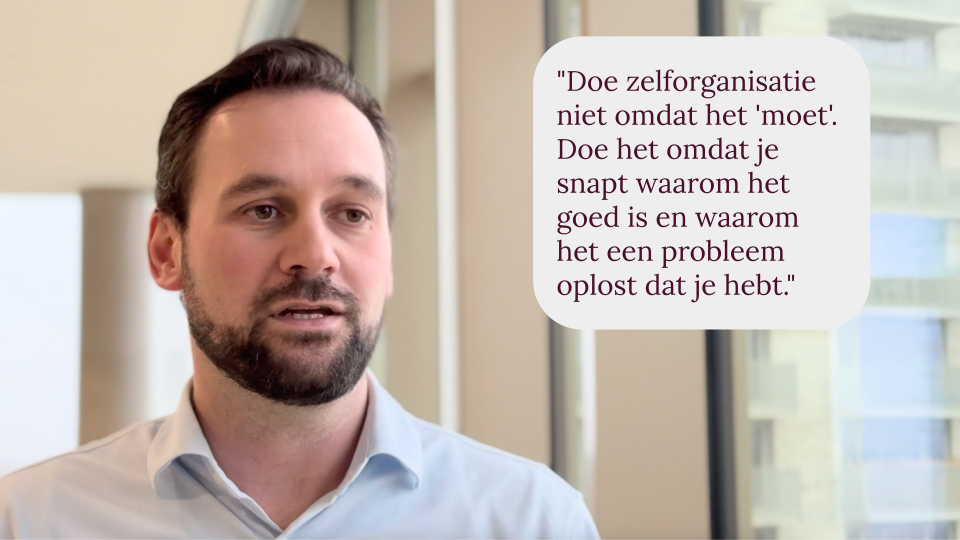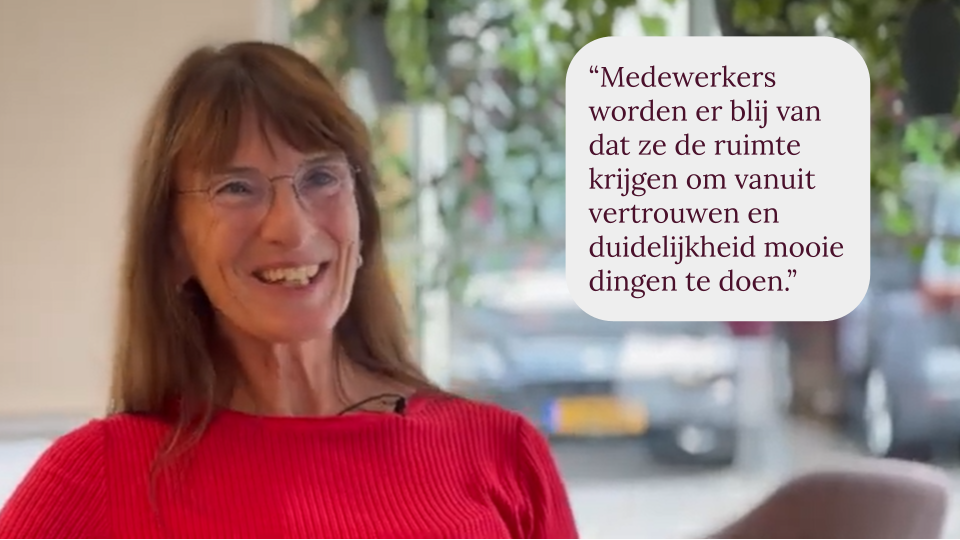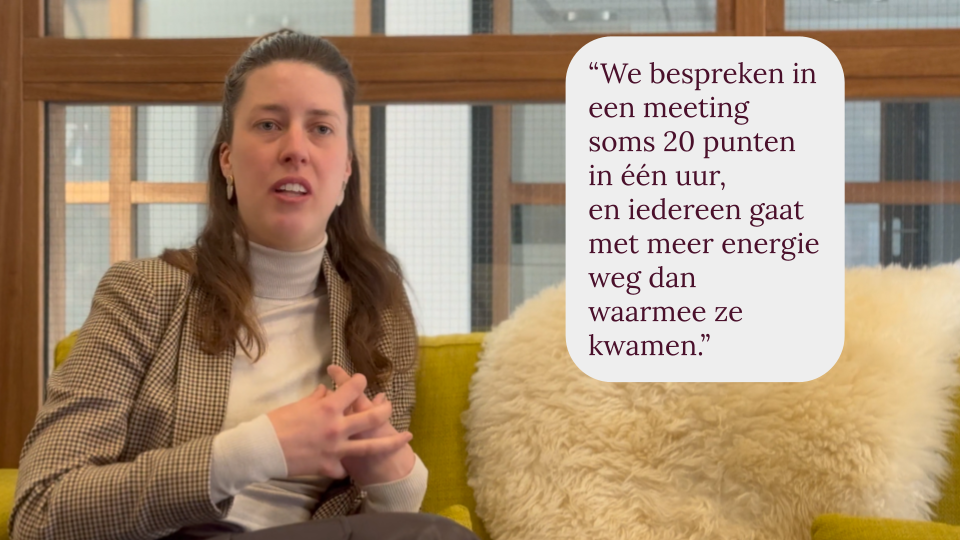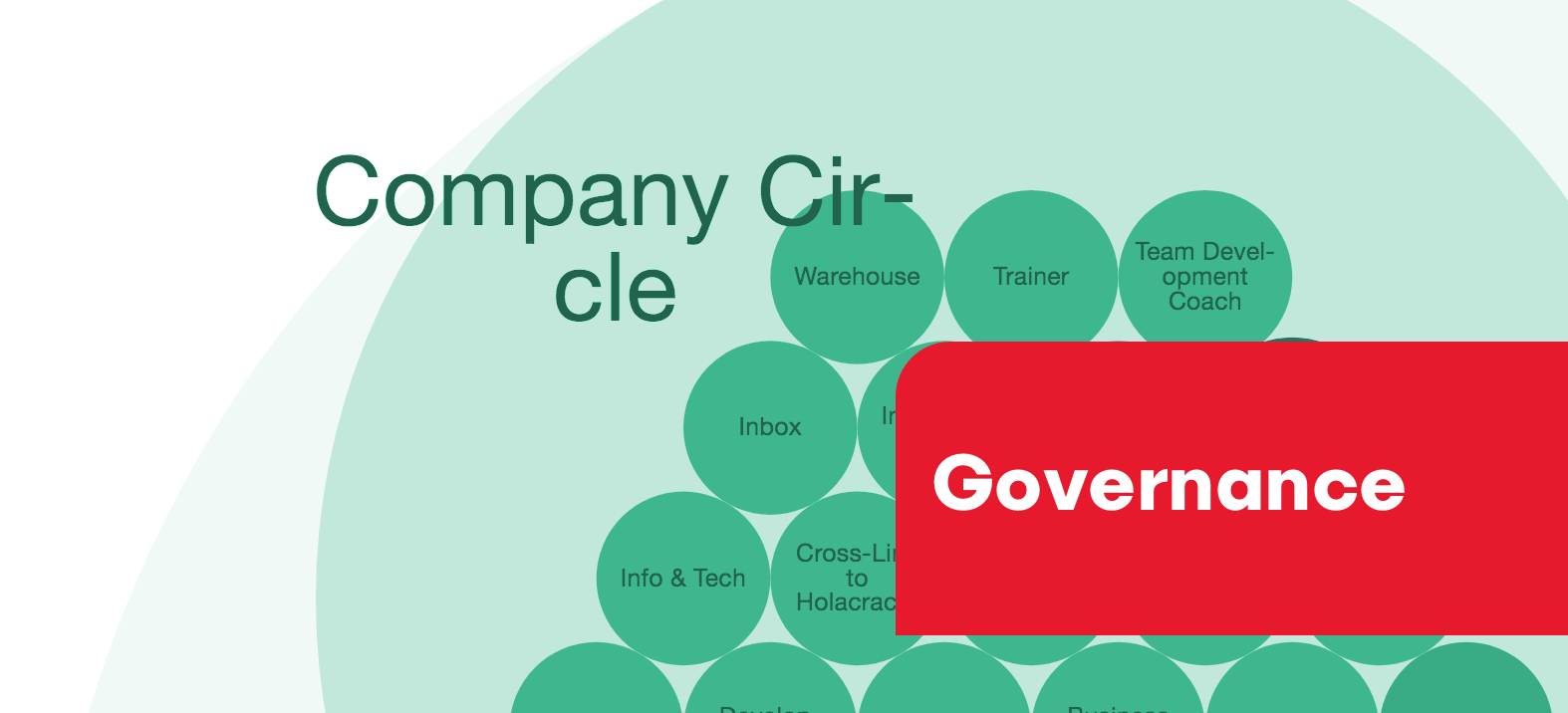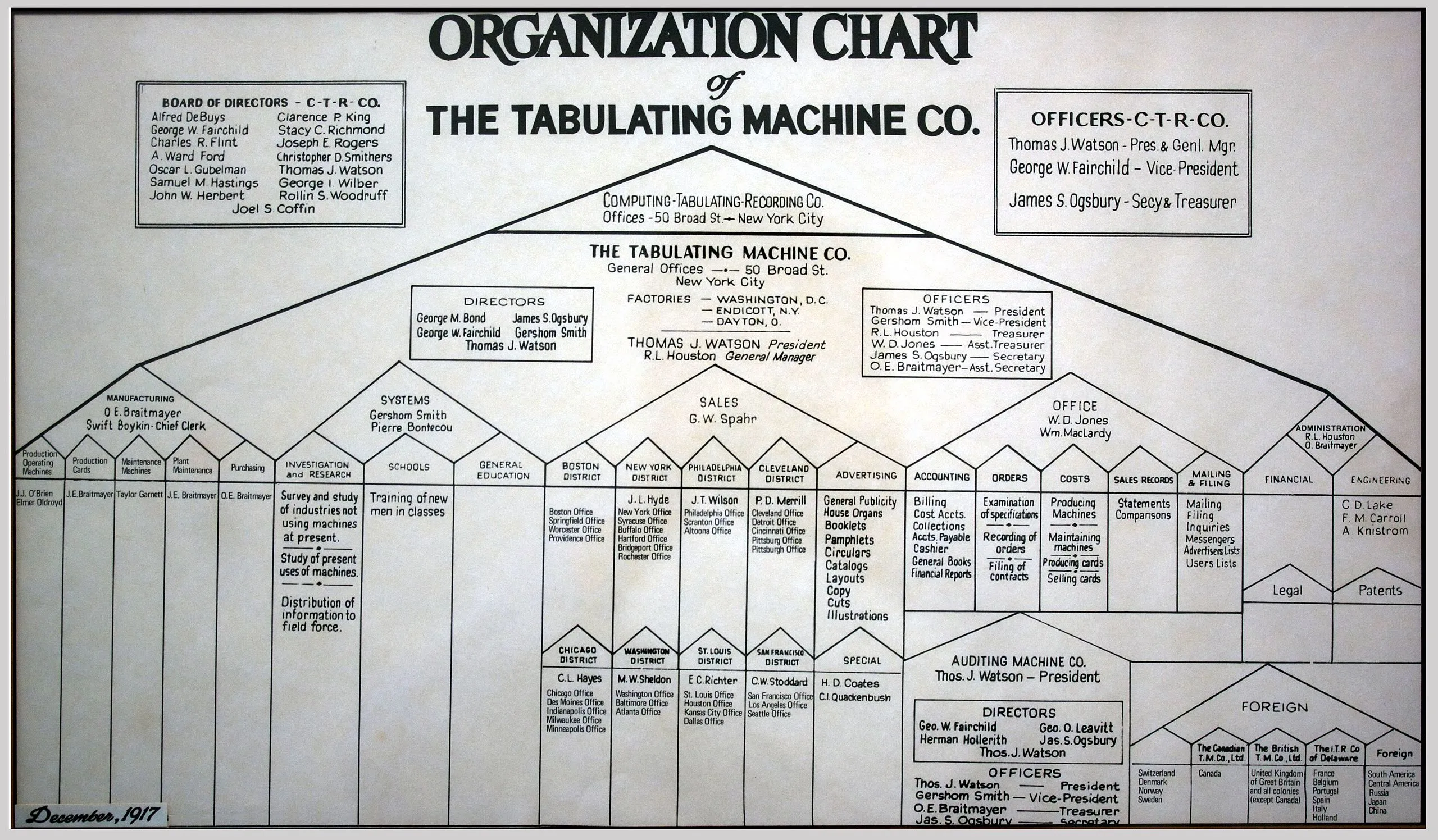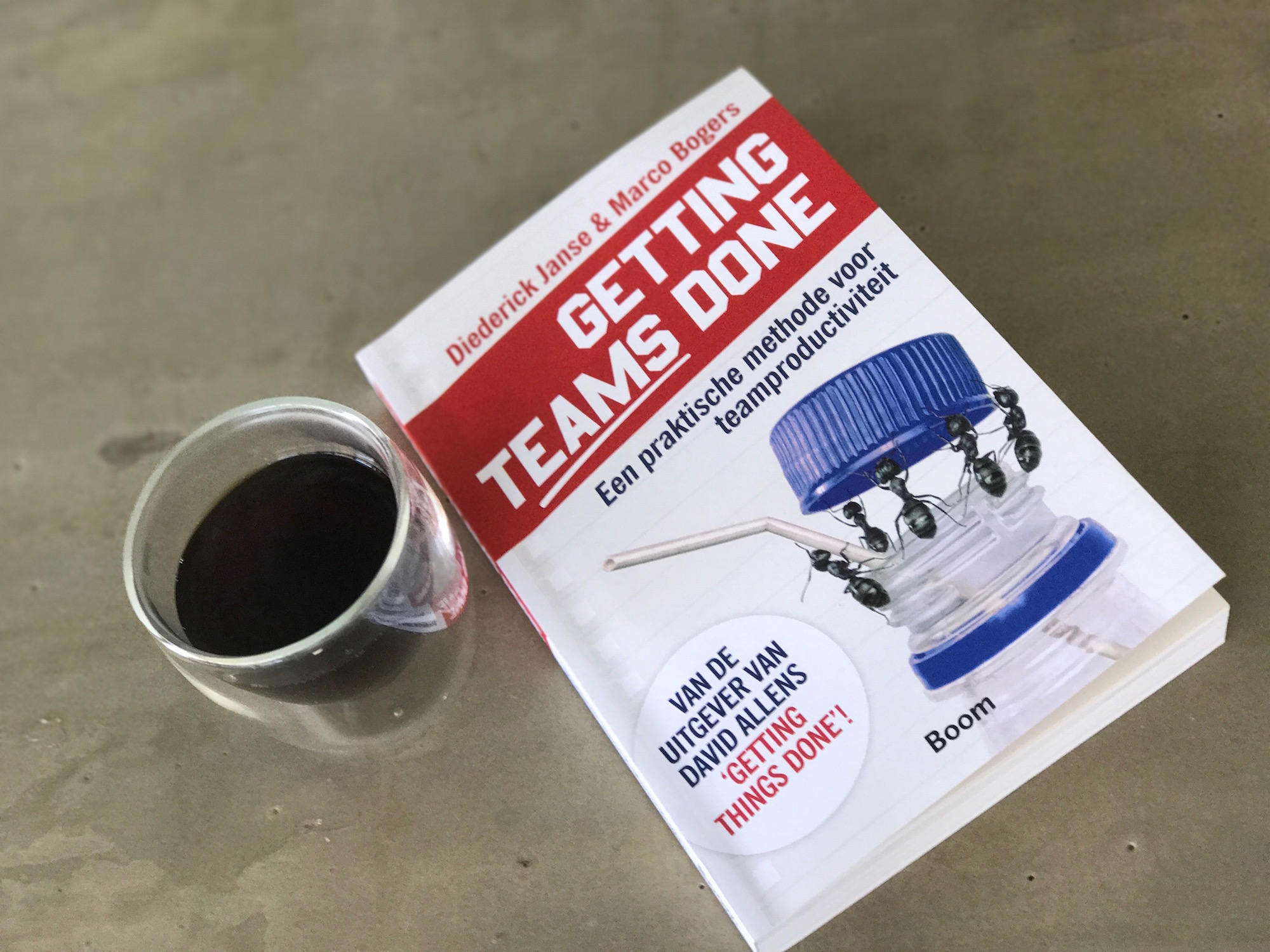Zelforganisatie
Heb je wel eens het gevoel dat je in je werkomgeving eerst iemand anders moet overtuigen, voordat je je werk kunt doen zoals jij denkt dat het het beste gedaan kan worden? Of kom je juist om in de beslissingen, en zou je willen dat anderen meer hun verantwoordelijkheid pakken?
De meeste organisaties werken in een hierarchie, die veel beslissingen aan de top legt. Dat kan voor de top overweldigend worden, en voor de rest juist ontmoedigend. Maar er is een alternatief: een zelforganistie. Dat is niet: het afschaffen van alle management en structuur, want die heb je wel degelijk nodig, maar het anders inrichten hiervan.
Wat is Zelforganisatie?
Zelforganisatie is een andere manier van organiseren, waarbij sturing en besluitvorming verschuiven: van managers naar teams. Binnen een team maak je heldere afspraken over wie waar verantwoordelijk voor is, en wie waarover besluit.
Dit doe je bijvoorbeeld door het werk te beschrijven in rollen en die onderling te verdelen. Sturing en structuur verdwijnen niet, maar krijgen een andere vorm.
Managementhiërarchie is helaas de norm
Veel organisaties maken gebruik van de klassieke managementhiërarchie. Niet per se omdat dat een bewuste keuze is, maar omdat het de standaard organisatievorm is die we het beste kennen.
En hoewel zo’n hiërarchie helderheid geeft, zijn er ook beperkingen: doordat veel van de besluitvorming geconcentreerd is bij een paar mensen, hebben zij weinig tijd en informatie om al die besluiten zorgvuldig te nemen. Ze voelen zich vaak overweldigd. Terwijl mensen met meer uitvoerende functies zich overgeleverd kunnen voelen aan de besluiten van een ander, wat demotiverend werkt.
Een goede zelforganisatie-structuur biedt dezelfde helderheid als een managementhiërarchie, maar dan met verspreide besluitvorming
Voorwaarden voor zelforganisatie
Vertrouwen
Het vergt vertrouwen in je collega’s om iedereen de autonomie te gunnen die hoort bij het oppakken van een rol in een zelfsturende organisatie. Structuren die hiervoor gebruikt worden moedigen dan ook aan om dat vertrouwen vast te houden, en ontmoedigen het vastleggen van regels die als micromanagen kunnen worden ervaren. (Maar regels kunnen natuurlijk wel nog worden vastgelegd!)
Veiligheid
Om dat vertrouwen in anderen en jezelf te kunnen hebben is het daarnaast belangrijk dat iedereen veiligheid ervaart: veiligheid om fouten te kunnen maken, en daarvan te leren, veiligheid om zichzelf te laten zien.
Transparantie
Wanneer het beslisrecht in je organisatie verspreid is, is het essentieel dat iedereen op de hoogte is van de relevante context voor het maken van goede beslissingen. Daarom is een voorwaarde voor goed functionerende zelforganisatie: transparantie. Dit betekent dat bijvoorbeeld de financiën voor iedereen inzichtelijk zijn.
Helderheid
Als binnen een organisatie iedereen autonomie krijgt, en daarmee beslisrecht is het onmisbaar dat het wel is afgebakend wie waarover gaat, anders zit je binnen no time in elkaars vaarwater. Je hebt dus continu helderheid nodig over de rolverdeling, en vooral: de mogelijkheid om die te blijven aanscherpen.
Tools en vormen van zelforganisatie
Om alle voorwaarden voor goede zelforganisatie te creëren zijn verschillende tools beschikbaar, sommigen vullen elkaar aan, tussen anderen maak je een keuze.
Besluitvorming en structuur (voor helderheid en transparantie)
De twee meest belangrijke tools voor besluitvorming en structuur van zelforganisatie zijn Holacracy en Sociocratie. Sociocratie kent weer vele vormen, zoals Sociocratie 3.0 en de Sociocratisch kringmethode.
Energized faciliteert de implementatie van Holacracy, of gebruikt elementen hieruit waar dat van toepassing is. We hebben ook ervaring met Deep Democracy, en nemen hiervan elementen mee
Groepsdynamiek en -ontwikkeling (voor veiligheid en vertrouwen)
Er wordt vaak onderscheid gemaakt tussen de ‘bovenstroom’ en de ‘onderstroom’. De bovenstroom gaat over functies, rollen, projecten, etc; het werk dat gedaan moet worden, en de onderstroom gaat over de mensen: het vertrouwen en de veiligheid, de onderlinge relaties en hun dynamieken. Holacracy maakt een helder onderscheid tussen die twee, en gaat zelf alleen over de bovenstroom. Dat wil niet zeggen dat de onderstroom er niet toe doet.
Het is juist cruciaal ook aan de onderstroom aandacht te besteden, maar daarvoor gebruik je andere tools.
Bij Energized gebruiken we System Centered Training, intern en bij de organisaties die we helpen.
Wat voor organisaties kiezen voor zelforganisatie?

Organisaties die zelforganisatie omarmen, variëren sterk in grootte en sector. Van kleine start-ups tot gevestigde multinationals, van non-profitorganisaties tot commerciële ondernemingen. Het gemeenschappelijke kenmerk is echter een gedeelde drang naar flexibiliteit, innovatie en effectiviteit.
Bedrijven die zich inzetten voor zelforganisatie zijn vaak gedreven door een diepgewortelde behoefte aan wendbaarheid en autonomie. Ze begrijpen dat traditionele hiërarchische structuren belemmerend kunnen zijn voor creativiteit en snelheid van handelen. Door over te stappen op zelforganisatie streven ze naar een cultuur waarin verantwoordelijkheden en besluitvorming gedecentraliseerd zijn, waardoor teams meer vrijheid en verantwoordelijkheid krijgen.
Onze klanten vertellen
In deze video’s vertellen Stijn Nijhuis (Enreach), Elske Heijnen (Travers Welzijn) en Christien van de Pavert, Charelle van der Hoek en Lianne van Lierop (Careibu) over hoe zij met hulp van Energized.org zelforganisatie tot leven brachten in hun organisatie.
Je bent in goed gezelschap
De afgelopen 15 jaar hebben we met meer dan 150 organisaties gebouwd aan een cultuur van eigenaarschap. Dit zijn er een paar die je misschien kent:






Populaire blogs
Veelgestelde vragen
We kunnen ons voorstellen dat je vragen hebt over Zelforganisatie. Je kunt altijd contact met ons opnemen, zodat we je zelf meer hierover kunnen vertellen.
Is de stap naar zelforganisatie een veranderproces?
Veel mensen noemen de stap naar zelforganisatie een veranderproces. Dat klopt ook.
Je stopt met opeenvolgende periodes waarin je grote veranderingen probeert door te voeren. Je start met het omarmen van continue verandering. Of sterker nog, je wordt comfortabel met veranderingen en verschillen. Dat is ook in zekere zin een veranderproces, maar vooral een die nooit ophoudt omdat de aanwezigheid van verandering de standaard wordt.
Eerder noemden we het ‘de laatste reorganisatie’. Dat klopt ook omdat reorganiseren een doorlopend proces wordt. Je leert om zelf steeds kleine aanpassingen te maken zodat het werk en het bedrijf beter aansluiten op de werkelijkheid van dat moment.
Daarvoor gebruik je alle sensoren die er zijn. De mensen in de organisatie zelf. Doordat zij zelf de brandstof van de veranderingen zijn overkomt het ze minder. Zoals bij grote reorganisaties vaak een gevoel van machteloosheid wordt ervaren door de mensen binnen de organisatie, zo leren ze bij zelforganisatie hoe zij zelf veranderingen kunnen bewerkstelligen. Daarbij moet het altijd duidelijk zijn dat het ten dienste van het doel van de organisatie is.
Op het moment dat je begint aan zelforganisatie is het heel begrijpelijk dat er weerstand is. Wij zien die weerstand als een kans om de energie ten dienste van de organisatie te gaan gebruiken.
In feite is die weerstand een eerste spanning waarvan degene die hem heeft nog gaat leren om er brandstof van te maken.
Big Bang of olievlek? Hoe start je met zelforganisatie?
Begin je met een deel van je organisatie of moet je van de ene op de andere dag all-in? Dat bepaal je zelf.
Vaak is de organisatie veel te groot om direct met iedereen te starten. Dan begint een deel van de organisatie. Daarmee creëer je wel een tussen-situatie omdat een deel van de medewerkers dan zelforganiserend werkt en er ook nog een actieve management hiërarchie aanwezig is. Daarom wordt er vaak wel snel doorgeschakeld naar meerdere afdelingen.
Onze ervaring is dat er vaak ook vraag ontstaat vanuit de rest van de organisatie zodra de eerste ervaringen en verhalen intern gedeeld worden.
We raden aan om bij het starten met een deel van de organisatie (bijvoorbeeld een of meerdere teams) wel all-in te gaan met die teams. Dus die teams ook echt de ruimte geven.
Bij echt grote organisaties gebeurt het zelfs dat de directie of aandeelhouders niet direct meedoen.
Bij bol.com bijvoorbeeld waar ze hun variatie op Holacracy ‘Spark’ hebben genoemd werken steeds meer teams zelforganiserend ondanks dat er één team is gestart zonder expliciet doel om helemaal zelforganiserend te worden. Intern verkoopt Spark zich nu zelf en is zelforganisatie als een olievlek de organisatie ingegroeid.
Wat zijn de randvoorwaarden om zelforganisatie te laten slagen?
Om zelforganisatie te laten slagen, moet een organisatie voldoen aan enkele essentiële randvoorwaarden. Dit omvat een duidelijke purpose die door iedereen wordt begrepen, een cultuur van vertrouwen en open communicatie, en de bereidheid om traditionele hiërarchieën los te laten en een meer flexibele structuur te omarmen.
Wat is het verschil tussen zelforganisatie en Holacracy?
Zelforganisatie is een bredere term die verwijst naar een organisatiemodel waarin teams en individuen autonomie hebben in het nemen van beslissingen en het organiseren van hun werk, zonder directe tussenkomst van een hiërarchisch management. Holacracy is een specifieke vorm van zelforganisatie die een gestructureerd en formeel systeem biedt voor het verdelen van autoriteit en het nemen van beslissingen binnen een organisatie.
Wat als niet iedereen in de organisatie het idee van zelforganisatie ondersteunt?
Als niet iedereen in de organisatie het idee van zelforganisatie ondersteunt, is het belangrijk om open en eerlijke gesprekken te voeren om de zorgen en bezwaren te begrijpen. Het is cruciaal om te luisteren naar alle standpunten en deze serieus te nemen.
Wordt de organisatie niet veel trager als je zelforganisatie toepast?
Het is een misvatting dat zelforganisatie leidt tot een tragere organisatie. In werkelijkheid kan zelforganisatie juist leiden tot een hogere mate van flexibiliteit en responsiviteit, waardoor de organisatie sneller kan reageren op veranderingen in de omgeving.
Klaar om je verder te verdiepen?
Ontgrendel een heleboel kennis! We hebben talloze blogs, artikelen, handleidingen en zelfs een boek voor jou! Of je nu je eerste stappen zet of de diepte in wil duiken, hier vind je wat je zoekt.
Stuur ons een bericht
Je kunt onderstaand formulier invullen of bel even naar 085-1301795.
